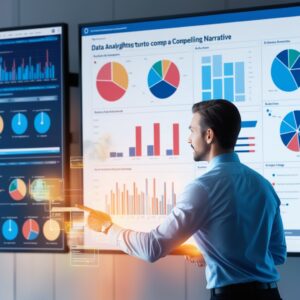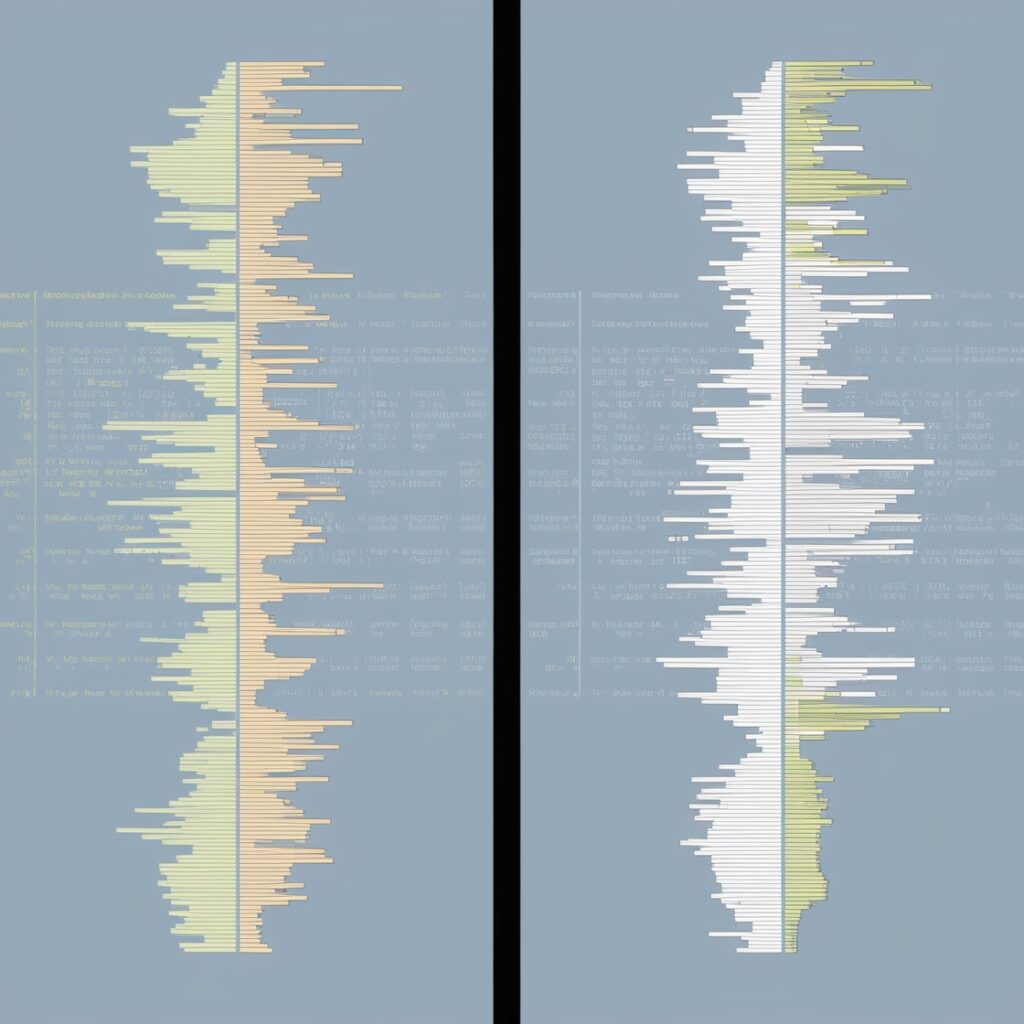Introduction
Making sense of massive amounts of data is more important than ever in the present era of information overload. Data is thrown at us from all angles, including social media interactions, commercial transactions, consumer reviews, and more. Raw data by itself, meanwhile, is insufficient to bring about significant change or arrive at wise conclusions. Transforming data from just numbers on a spreadsheet into something that may motivate action and have an impact on decision-making, interpretation, context, and relevance is necessary.

Storytelling Data can be useful in this situation. Storytelling Data integrates Data Analytics, Data Narrative, and Data Visualization, in contrast to traditional methods that might just rely on reports and statistics. With the help of this combination, businesses can create engaging tales out of complex information that appeal to a wide range of stakeholders, including executives, staff members, and consumers. A Data Analyst is essential to this process because they filter the data to find the most pertinent insights and then work with the team to present these insights in an interesting and educational story.

There is much more to Storytelling Data than merely visually appealingly arranging figures and charts. The goal is to incorporate Data-Driven Insight into a Visual Storytelling experience that appeals to the needs and feelings of the audience directly. For instance, a Data Analyst might create a narrative that explains the reasons for the fall and provides practical advice based on the data, as opposed to just displaying a graph of declining sales. In a time where information overload is a constant concern, our technique makes data more accessible, intelligible, and actionable.
Is Storytelling Data Always Objective?
With the help of Storytelling Data, complex datasets may be transformed into interesting and useful stories. But there could be a downside to this strength: there could be a chance that Data Analytics’ objectivity is compromised. There is an inherent risk when creating a narrative around facts that the story will be interpreted by the audience in a biased or selective way.

Intentionally or inadvertently emphasizing some data points over others to support a specific narrative can lead to this kind of distortion, potentially altering the overall image. This poses a crucial query for people who rely on Storytelling Data: Is it possible for the process of storytelling itself to unintentionally taint the objectivity and veracity of the insights being offered?
The short response is that, although there is a danger, it may be successfully reduced by using appropriate procedures. The secret is to present the story while preserving the accuracy of the underlying data. As a result, rigorous data interpretation is required to guarantee that the conclusions derived from the data are true and accurate reflections of the current circumstance.
Data Storytelling Techniques should also be open and objective, emphasizing the presentation of the data in a way that is accurate and thorough. Making data more relevant and actionable without compromising the objectivity necessary for well-informed decision-making is what Storytelling Data aims to accomplish. Storytellers must avoid the need to distort data to suit a preconceived narrative and instead use the data to emphasize and unearth real insights that have the potential to produce significant results.

Storytelling Data Across Industries

Storytelling Data is not limited to a single industry; it is a powerful tool across various sectors, each benefiting uniquely from its application:
1- Healthcare
In healthcare, Data Storytelling is used to improve patient outcomes. By visualizing patient data, healthcare providers can create Data-Driven Insights that inform treatment plans and healthcare policies. For instance, Visual Data Analysis can reveal trends in patient health, enabling more proactive and personalized care.
2- Finance
In the financial sector, Storytelling Data is crucial for making complex financial information understandable to non-experts. Data Visualization tools can transform vast amounts of financial data into intuitive Dashboard Reporting that stakeholders can easily interpret. This helps in making informed investment decisions and managing risks effectively.
3- Marketing
Marketers use Data Storytelling Techniques to craft compelling campaigns that resonate with target audiences. By analyzing consumer behavior through Data Analytics and presenting it in a narrative form, marketers can create more personalized and effective marketing strategies.
4- Education
In education, Storytelling Data helps educators understand student performance and learning outcomes. Data Visualization combined with Narrative Analytics can identify areas where students struggle, allowing educators to tailor their teaching methods to better meet students’ needs.
5- Retail
Retailers leverage Storytelling Data to enhance customer experiences. By interpreting sales data and customer feedback through Visual Data Analysis, retailers can create stories that guide product development, marketing strategies, and in-store experiences, ultimately driving sales and customer satisfaction.
Conclusion
The Dual-Edged Sword of Storytelling Data
There is no denying that Storytelling Data is a revolutionary instrument that can fully realize the promise of Data Analytics in a variety of sectors. Organizations may increase the accessibility, relatability, and actionability of information by transforming difficult facts into gripping narratives. This skill is especially important in the fast-paced, data-driven world of today, where having the capacity to analyze and act on data quickly can provide one a substantial competitive advantage.
Firms may communicate insights to a wide range of audiences, from executives to frontline staff, by using Storytelling Data. This approach helps firms make well-informed decisions and propel strategic projects.

But it’s crucial to understand that using Storytelling Data has two drawbacks. Although it can increase the effect of data, there are inherent hazards associated with it, most notably the risk of bias and misinterpretation. Subjectivity can be included in the narrative-building process itself, since some data pieces may be emphasized or minimized to suit a particular plot point. This may result in distorted interpretations, which could mislead policymakers and produce ineffective tactics.
Thus, the difficulty is finding the ideal balance between preserving the objectivity and integrity of the data and developing a compelling story. When using Data Storytelling Techniques, care must be taken to ensure that the narrative accurately conveys the underlying insights and that the Data Interpretation stays accurate.
Organizations that use Storytelling Data must continue to be cautious and methodical in their approach. Decision-making must be improved through the use of Data Storytelling, not distorted. This calls for a dedication to truthfulness, openness, and moral narrative techniques. By doing this, Data Storytelling has the potential to radically change how we perceive and utilize data, improving results in every industry. When done well, Storytelling Data may close the gap between data and decision-making, preserving the integrity of the insights it aims to convey while transforming unprocessed data into a valuable weapon for innovation and expansion.


